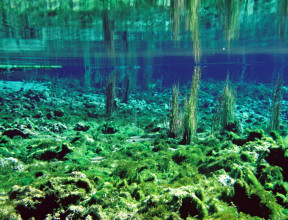
Climate System

The global climate system is governed by the laws of physics and chemistry. These laws determine how winds and oceanic currents move heat, water and air around the globe.
The climate system
The laws of physics and chemistry rule how winds and oceanic currents move heat, water and air around the globe. Researchers who study climate systems seek to untangle this complex machinery and identify how elements that make up local and global climate systems interact. By understanding these interactions, we are better able to predict how changes (like the increases in greenhouses gas) will have knock-on effects throughout the system.
Untangling the complex machinery
At GNS Science, we use core archives from lakes, ice and the ocean to look into the functioning of this machinery in the past. For example, we study cores to see how the westerly wind system, oceanic currents, and patterns in precipitation (rain, snow) have changed around New Zealand, the Southern Ocean and Antarctica. It is particularly useful to focus our attention on time intervals when climate was globally warmer than today, as the information we gain through our studies will help us to better understand the changes that the global climate system will face over next few hundred years.
The studies we participate in involve a wide variety of techniques applied to records obtained from locations all over the world.
Global Change Through Time
The Global Change Through Time (GCTT) programme is part of an international research effort on global and climate change. It focuses on improving predictions of future progressive or abrupt warming and improving predictions of future climate variability. It aims to improve understanding of the carbon cycle and climate sensitivity to atmospheric greenhouse gas concentration.





